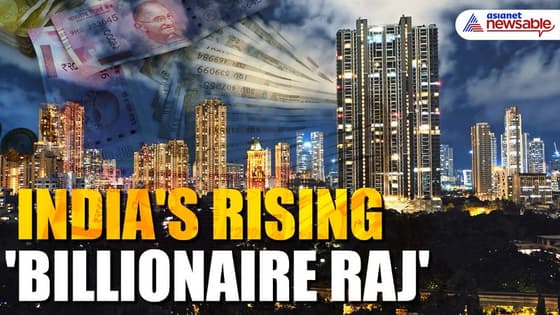
India's 'Billionaire Raj': Top 1% holds greater income share than US, Brazil, and South Africa (WATCH)
What emerges from the study is a disconcerting reality: the top 1% of India’s population commands a staggering 22.6% share of the country’s income and a whopping 40.1% of its wealth.
In a startling revelation, a recent study published by the World Inequality Lab has brought to light the concerning disparity in income distribution within India. The study, co-directed by renowned economist Thomas Piketty, has underscored that the top 1% of India’s population possesses a higher share of the country’s income compared to affluent nations like the United States, Brazil, and South Africa.

The findings of the study, titled "Income and Wealth Inequality in India, 1922-2023: The Rise of the Billionaire Raj," have sent shockwaves through the economic and social spheres. Authored by economists Nitin Kumar Bharti, Lucas Chancel, Thomas Piketty, and Anmol Somanchi, the report delves into the dynamics of wealth concentration in India between 2014-15 and 2022-23.
What emerges from the study is a disconcerting reality: the top 1% of India’s population commands a staggering 22.6% share of the country’s income and a whopping 40.1% of its wealth. These figures represent historical highs, underscoring the widening gap between the affluent elite and the rest of the population.
Dubbed the 'Billionaire Raj' by the authors, this trend of extreme wealth concentration raises significant concerns about its implications for societal well-being and governance. The study suggests that such concentrated wealth is likely to enable disproportionate influence over both society and government, posing a threat to democratic ideals and exacerbating social inequalities.
“After largely being a role model among post-colonial nations in this regard, the integrity of various key institutions in India appears to have been compromised in recent years,” the authors said. “This makes the possibility of India’s slide towards plutocracy even more real.”
“While the BJP were voted into power on a mandate of development and economic reforms, many observers believe that over its two terms, it has led an authoritarian government with centralization of decision-making power coupled with a growing nexus between big-business and government,” it said.
Moreover, the report highlights a concerning trend of wealth accumulation among India's billionaire class. Over the past decade, the number of individuals with a net worth exceeding $1 billion has surged from just one in 1991 to a staggering 162 in 2022. This exponential growth in billionaire wealth, which now represents 25% of India’s net national income, underscores the extent of wealth inequality in the country.
The authors of the study propose several measures to address this alarming trend. They advocate for a restructuring of the tax code, including the implementation of a 'super tax' on the net wealth of the wealthiest families. Such measures, they argue, would not only create fiscal space for vital public investments but also contribute to a more equitable distribution of resources.
“A ‘super tax’ of 2% on the net wealth of the 167 wealthiest families in 2022-23 would yield 0.5% of national income in revenues and create valuable fiscal space to facilitate such investments,” the study said.
The study also emphasized the necessity for public investments in health, education, and nutrition to ensure that the benefits of globalization are accessible to the average Indian, rather than being limited to the elites.
Utilizing a comprehensive approach, the study integrated various sources of data including national income accounts, wealth aggregates, tax records, rich lists, and surveys on income, consumption, and wealth. This methodological framework provided a cohesive and thorough analysis of the income and wealth distribution in India.
Furthermore, the study raised concerns about the deteriorating quality of economic data in India, noting a recent decline. This decline in data quality poses significant challenges for accurately understanding and addressing issues of inequality and economic disparity in the country.